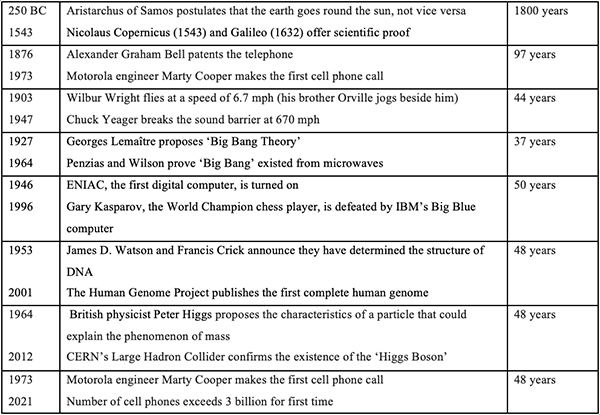My grandchildren find it hard to believe that I grew up in a world without color television, when most aircraft had propellers, when you literally dialed someone on the telephone, when almost all cars had manual transmissions, etc., etc. Looking back, it’s hard to believe we survived, particularly in a world without safety helmets and without long periods of adult supervision.
I am devoting my February blogs to science and technology, and this blog focuses on the pace of change: how long, in science, did it take to get from A to B? For example, Aristarchus of Samos figured out that the earth went round the sun, and not vice versa, but he (or his ghost, to be more accurate) had to wait 1700 years for Copernicus and Galileo to prove him right. In contrast, Peter Higgs had to wait only 48 years for CERN’s atom smasher to find his boson.











